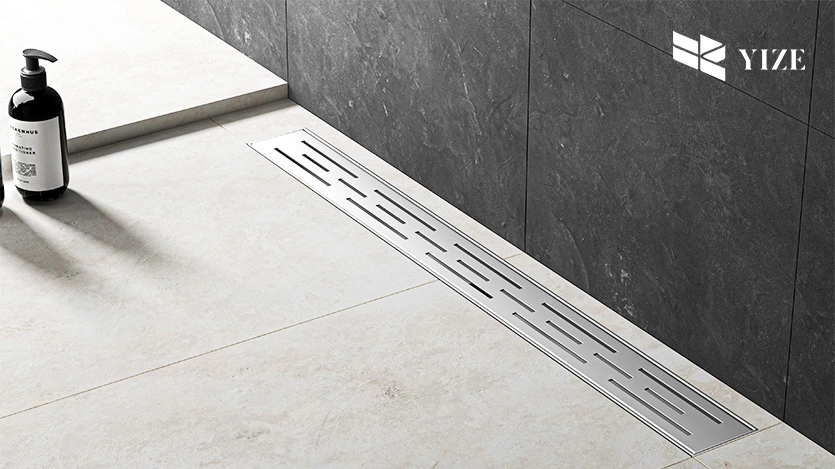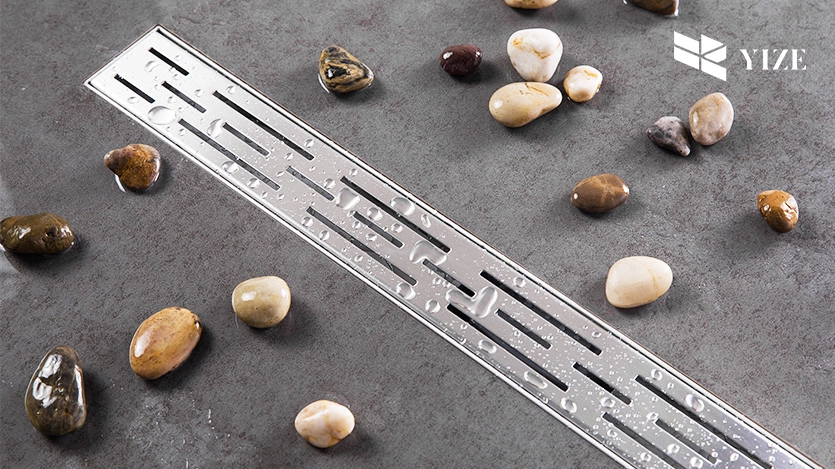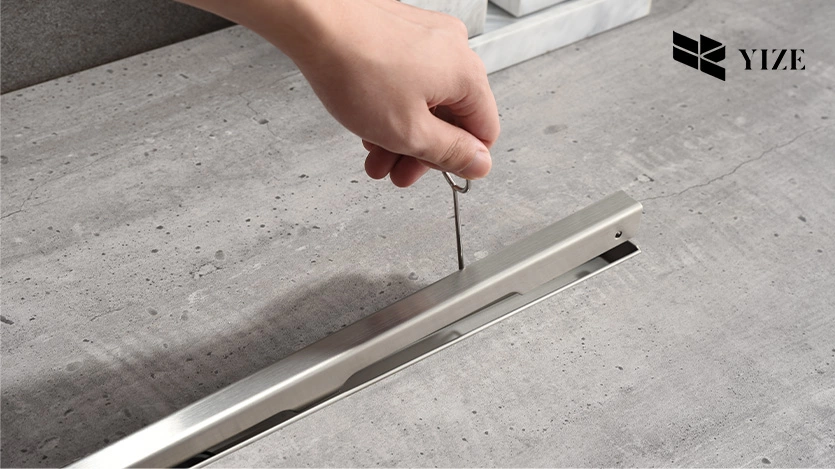
I. Introduction
Selecting the appropriate shower drain is a vital step in the whole process of bathroom remodeling, but still remains unrecognized. When choosing the right shower drain, two things stand out: proper functionality in draining water and matching the appearance of the bathroom. In this article, you will find out more about different shower drain types and the benefits and drawbacks of each one when using them in your shower remodel. Read on to find out how shower drains are categorized and to get some great advice on choosing the right drain for your needs.
II. What are the Different Types of Shower Drains?
Shower drains are categorized primarily into three types: There are point drains, linear drains and trench drains. They have unique characteristics for specific uses in applications.
1. Point Drains:
- Usually circular or square and located at the center.
- Also known as pedestal basins, they are typical in traditional-styled bathrooms.
- Best for use in small to medium sizes of showers only.
2. Linear Drains:
- Protracted pipes or channels, which could be of a large width in which water flows in a straight course.
- Suitable for contemporary baths with acute lines.
- Best for showers which are considered large or for barrier-free design arrangements.
3. Trench Drains:
- One of the subtypes of linear drains is potentially wider and deeper than others.
- Intended for large water flow rate spaces like a shower that comes with spa features and characteristics.
- Provide a forward strike with an architectural appearance.
III. Comparison: Traditional vs. Modern Drain Systems
1. Traditional Point Drains:
- Pros: Inexpensive, simple to fit, and can be used in sloping floors.
- Cons: Difficult to implement different designs and not as efficient in huge showers.
2. Modern Linear and Trench Drains:
- Advantages: The ability to produce appealing look, flexibility in terms of placement, and the discharge of water.
- Applications: Suits most walk-in showers and modern styling.
IV. Key Factors in Choosing the Best Shower Drain

1. Consider Your Bathroom Layout
The design of the bathtub you wish to have decides the Shower Drain that you will use for your bathroom.
(1)Small Bathrooms:
Point drains are convenient because of their small size and cost-efficiency.
(2)Large Bathrooms:
Western or border channels have improved levels of drainage and offer a better appearance.
(3)Barrier-Free Showers:
Linear drains are preferred because they do not require high floor gradients as other models.
2. Drain Material and Design
(1)Materials:
- Stainless Steel: Longlasting, non-rusting, and needing minimal maintenance.
- Composite Materials: Quantities are cheap and lightweight, yet not very long-lasting.
- Plastic: Inexpensive but could work for only a limited amount of time.
(2)Design:
- Make sure the style of the drain compliments the complete bathroom décor.
- Contemporary bathroom designs are better done with simple cover plates, while decorative ones are appropriate for classic designs.
V. Comparison: Different Shower Drain Types
1. Linear Drains
Linear drains are quickly becoming popular because of their sleek appearance and effectiveness of the system.
(1)Benefits:
- Can handle large volumes of water.
- The single slope allows flexibility in the tile design.
(2)Where is the Best Location for a Linear Drain in a Shower?
- At the most, it connects to the wall or at the entrance to a shower enclosure for minimal interference with the space.
- Align the body on the line to perform a coordinated water flow in accordance with the slope of the floor.
2. Point Drains
Point drains are one of the most reliable and time-proven shower drain types and are still popular all over the world.
(1)Advantages:
- Inexpensive and can be installed with low complexities compared to other conventional roofing materials.
- Best used in small shower cubicles.
(2)Challenges:
- Needs a four-way slope that can restrict the ability to tile.
3. Trench Drains
Linear drains, popular Trench drains, are specifically suitable for showers that experience heavy water pressure.
(1)Advantages:
- Ideal for use where there is a large shower and also wet areas.
- It is always great to have an added artistic feature in a home’s architecture.
(2)Challenges:
- Costlier than laminate and should be installed by an expert.
VI. Installation, Maintenance, and Troubleshooting

1. How to Install Different Shower Drain Types
(1)Point Drains:
- They suggested that the drain’s position should be measured and marked.
- Put in the drain base and join to the plumbing.
- To proceed, fix the boat, waterproof the area and then finish with the tile installation part.
(2)Linear Drains:
- Match the position of the studs with the floor slope needed for the water to flow in case of a flood.
- Likewise, for a stable connection, it is important to level correctly.
- By using waterproof membranes, one is able to avoid leaks.
(3)Trench Drains:
- Dig a trench according to the specified length and width in the having area.
- Lay the drain body onto the ground and connect it to the outlet pipe.
- Check for leakage before finishing the floor, then changing to flooring.
2. How to Remove Different Types of Shower Drains
- For a tighter grip, use the right tools for taking out screws, for instance, a screwdriver or pliers.
- Prior to removing the actual body, the grates of linear drains should be unscrewed.
3. How to Unclog Different Types of Shower Drains
One of the ways is to fit hair catchers or strainers with a view of minimizing the trap of debris.
Unclogging Techniques:
- For point drains: A plunger and a plumber’s snake should be used.
- For linear and trench drains, pull out the grate and clean the drain channel by hand.
VII. Why Choose YZDRAIN Products?
YZDRAIN provides a vast catalog of superior quality shower drains to cater for various clients’ needs. The products they offer have better engineering, better material, and friendly user considerations. For a small bathroom you may need a point drain or if you want to design a shower without barriers you will need a linear drain in which case YZDRAIN offers efficient solutions that do not compromise esthetics.
VIII. Conclusion
Selecting the right shower drain type is essential when it comes to remodeling the bathroom. By explaining the differences between point, linear, and trench drains, you stand a better chance of picking the right one for the layout of your bathroom as well as its design. In the right installation and care, your preferred drain should serve the needs of the bathroom and its style for as long as possible. If you have your sights set on the best, be sure to check out all that YZDRAIN has to offer to select the best piece for your endeavor.
FAQs
1. What is the most common shower drain type?
The most common type of shower drain is a point drain, also known as a center drain:
– Location: Point drains are typically located in the middle or corner of the shower floor.
– Shape: Point drains can be round or square.
– Function: Water flows from the shower floor into the drain through a gradual slope.
– Installation: Point drains are easy to install and work with many plumbing systems.
– Cost: Point drains are usually cheaper than linear drains.
– Clogging: Point drains can accumulate soap and debris, which can lead to clogs.
2. Can linear drains be installed in small bathrooms?
Yes, linear drains can be installed in small bathrooms, as they are considered a good option for smaller spaces due to their ability to be installed with minimal space between walls and their efficient water drainage capabilities, often creating a more open and spacious feel compared to traditional center drains; making them suitable for smaller shower areas..
3. Is there a difference between a tub drain and a shower drain?
Yes, a tub drain and a shower drain are different, primarily in size, where a shower drain is typically larger (usually 2 inches) than a tub drain (usually 1.5 inches) to accommodate the higher volume of water from a shower; this difference is due to the need for faster water drainage in a shower to prevent flooding.
4. What kind of drain do you need for a tile shower?
For a tile shower, you will need atile-in drain. This type of drain allows the surrounding tile to be laid directly into the drain’s grate, creating a seamless, aesthetically pleasing look. Make sure the drain is designed to accommodate tile floors and can handle the weight and water flow.
5. Are trench drains suitable for residential bathrooms?
Trench drains are definitely usable in residential bathrooms, particularly in sophisticated or shower-only baths.

